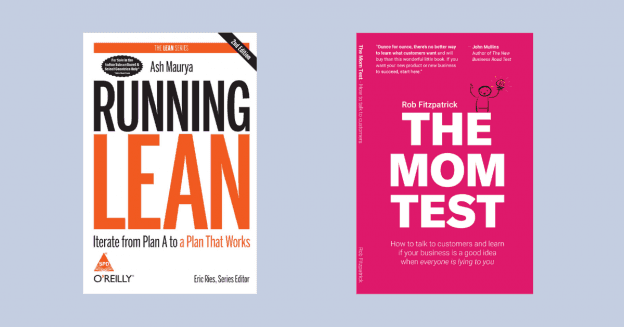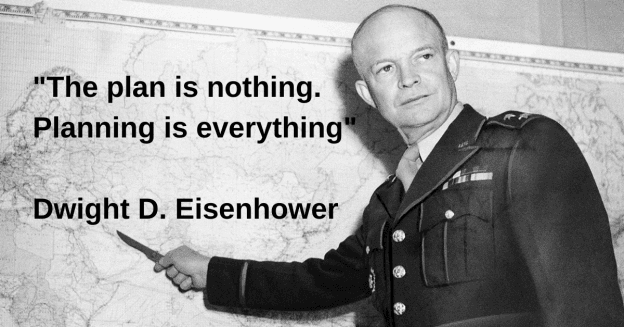How To Create a Product Development Strategy – Step by Step

Product Development Strategy is the notion that seems to be everywhere. Ever since you’ve shared your startup idea with the world there hasn’t been a single day without someone mentioning it to you. All you seem to hear is strategy this, a strategy that… Are we right?
Do you keep nodding your head and promising yourself that soon, tomorrow, once you finalize this important whatever-is-on-your-plate-right-now, you are going to finally Google this strategy out and learn what it is? Is today the day? We truly hope so.
What is Product Development Strategy?
Let’s make it clear once and for all.
Product Development Strategy is a detailed plan on how to turn the idea into a product.
Yep, it is that simple. However, this simple statement is most definitely not all you need to know about the Product Development Strategy. We strongly suggest you keep reading.
Generally speaking, Product Development Strategy is built on the scaffolding of a Product Development Framework (you can read more about in our previous post).
It should consider all the issues covered in the Product Development Framework, but in much more detail. Apart from focusing on goals, it should also cover specific ways to achieve them. It should take into consideration the market need you want to respond to. And last but not least, it should be constantly updated to reflect the current situation.
What is the most important part of the Product Development Framework? There can be only one answer: market validation. You need to be 100% sure that people do need your product.
Why do you need (product development) strategy
When you do something important, it’s better to approach it with a plan. It’s not an accident that there are so many great quotations on planning. We found this one by Thomas Edison perfectly suitable to what we try to convey:
Good fortune is what happens when opportunity meets with planning.
And the bigger the venture, the more specific the plan. It’s pretty obvious, isn’t it? Is building a startup an important initiative? We truly hope for a “yes” on your side.
However, there is one more thought we would like to share with you on this topic. When you think of it, it becomes apparent that the Product Development Strategy is much more important in startups than it is in big companies.
Product Development Strategy in big companies
Big companies usually have a wide portfolio of different products. Surely, it wasn’t always this way, but we are going to discuss the current state of affairs. What does it change regarding the Product Development Strategy? For starters, they have the experience, people, resources, and money to invest in the process. Yet, the biggest difference lies somewhere else. They can afford (and by “afford” we don’t necessarily mean financially) to fail. Adding a new product to their range is not a matter of survival for them. Can you see the paradox? They have all the resources, and on top of that all, they can be a bit reckless with them.
However, it is worth pointing out that we are living in interesting times for big corporations. Digitalization of the entire world started the domino of events and consequences that can (and to some extent already did) result in the process called unbundling the corporations. You can read about it in more detail here. Yet, the core idea you need to remember is that there is a big chance for startups to get the piece of the market cake previously reserved exclusively for big players.
Product Development Strategy in startups
Let us make an educated guess here. You have exactly one product idea and your company depends on it? No worries, this is the case with most startups. Even if your idea is to take one area of expertise of the big corp and refine it to deliver a better experience, you still have good odds at success. However, what you need to bear in mind all the time is that you want to outsmart the ones that have more resources and less to lose. It is our root belief that this cannot be achieved without a plan or strategy. We think that:
Product Development Strategy in a startup is actually a company development strategy.
Having said that, we can safely say this is the reason the Product Development Strategy is necessary. It helps vision become a viable product. It is the best way to predict and avoid pitfalls that aren’t obvious at first sight. It helps you plan better and allocate resources where you need them most. And when you already know what you want to build, Product Development Strategy helps you figure out how to build it.
We like this statement a lot: “Product development strategy is important because it uses market research to develop a plan for success in selling products.” (source)
The core principle
In fact, if we were to choose just one element of the Product Development Strategy which should be mandatory for EVERY single startup that would be market research. Why bother building something that nobody wants to buy? Seems logical? Did you know that: “…the number one reason why start-ups fail was no market need. In other words, there was no customer.”? How do we know it? We’ve seen it more than once. You still don’t believe us? Check this article from a very niche business periodical – namely Forbes.
So before you do anything else, just get out there and validate your great idea with the market. And by market, we mean real people. As scary as it seems you have to talk to people.
We hope we have convinced you that you do need a Product Development Strategy. However, before you open a text editor and start drafting one, have a quick look at this text about the Product Development Framework.
How to create a Product Development Strategy?
We are sorry, but there is no simple answer to this question. Every product is different. Every business is different. This means that what works for others may be a complete disaster for you. But don’t get frustrated just yet. We will try to provide you with some tools for building a strategy.
First of all, and we know we’ve mentioned it a hundred times in this text, you have to go out there and ask people what they think about your product. We know it’s exposing your precious ego to the public, but there is no way around it. After all, it’s better to have your ego hurt by a few people you’ve interviewed than to suffer publicly when your company goes to the startup graveyard. If you don’t know how to do it, we can recommend some resources. If you like reading, check “Running Lean” by Ash Maurya. An alternative and fun approach can be found in Rob Fitzpatrick’s “The Mom Test”. Do you want to start just now? You should at least listen to Justin.

Of course, there might be cases when the problem seems to be bigger than just a fear of not getting the validation. Try to learn from that too. If you can’t reach your perfect customer to talk to them, how are you going to reach them when you launch? You need to be ready to turn every obstacle into insight. The more you know before you invest any resources the smarter decisions you make.
You have that part covered? Kudos to you. You can start thinking about the resources you need to develop your startup. Do you need partners? What kind of partners? Do you need money? Ha! Of course, you do. Time? Yeah, time is always scarce. Just go through your framework and plan the hell out of it.
Creating Product Development Strategy – step by step plan
- Read our post on Product Development Framework 😉 and use the questions we provide there.
- Do market research.
- Write a sensible backlog. Try to get rid of any features that are not 100% necessary. Think of delivering the MVP in 3 months. (You don’t believe it’s possible? Check our case studies here).
- Get the interdisciplinary team in one room and consult the backlog with them (you need UX Designer, tech person and Product Owner or a person that can act like one). Remember to keep your backlog to the absolute bare minimum. You can learn how to do it here.
- When you are done with all the technical stuff – think about the marketing.
We know that the above steps leave a lot of room for interpretation. Thus, we understand you might still not feel 100% confident. If you need more guidance (or you prefer to listen to people than to read), we encourage you to listen to our webinar about Product Development Strategy.
More battle-tested recommendations on building a product

Focus on your real goal
Start by identifying the goal a first version of the product should satisfy. Is it going to be a prototype for investors, an MVP for real customers, a business process optimization, or something different?
Reduce the scope
Save up to 80% of the time by cutting the backlog to the absolute minimum. We know it can be difficult that’s why we recommend to do it together with an experienced Product Owner.
Choose the right product team
To ensure a smooth cooperation search for a software development team that has both excellent technical skills and a great understanding of business.
Trust the product team
Sharing responsibility with Product Owners and developers helps reduce decision-making time and helps processes go frictionless.
Focus on value delivery
Allow the development team to find balance between quality, functionality, and speed this will contribute to a stable project pace.
Make tough decisions fast
Don’t be afraid of making the wrong decision – hesitation can end up costing more than reworking a piece of software. After all, time is money.
Communicate inside and outside of the team
To operate effectively and work around shortcomings, the product team needs business context and the business representatives need to understand technological issues. Make sure everyone is on the same page.
Educate stakeholders about the development process
Keep stakeholders updated about the development process. This way you can protect your development team from unnecessary distractions. This is one of the tasks of the Product Owners – to make sure everybody is informed.
Choose the technological stack wisely
Save months of work by integrating the solution with third-party SaaS providers, searching for existing reusable components, and deploying on a stable infrastructure that does not require maintenance.
Minimize risk by making business-oriented decisions
Every technical novelty should be rooted in business goals. Explore new technologies only when your business needs them and focus on battle-tested, well-known frameworks to complete the project timely and safely.
If you like those ten you might be interested in our guidebook about Product Development Strategy (don’t worry, it’s not very long – we know you’re busy building your company).
Things to remember
Product Development Strategy is a way to save time and money. Its main purpose is to help you keep control over your growing business or business to be. You do it by validating your product idea or, in other words, by talking to people and asking them if they need your product. Once you do, you are ready to invest time and resources to actually build something. If you decide you need help with that, bear in mind that we have a special 10% discount for people who come to us with a filled-in Lean Canvas 😉
TL;DR
- Don’t start your business without strategy.
- Validate your product idea – talk to people.
- Brainstorm about your business idea – use Product Development Framework.
- Build your Product Development Strategy.
- Don’t feel like doing all this stuff? Hire a Product Owner.

